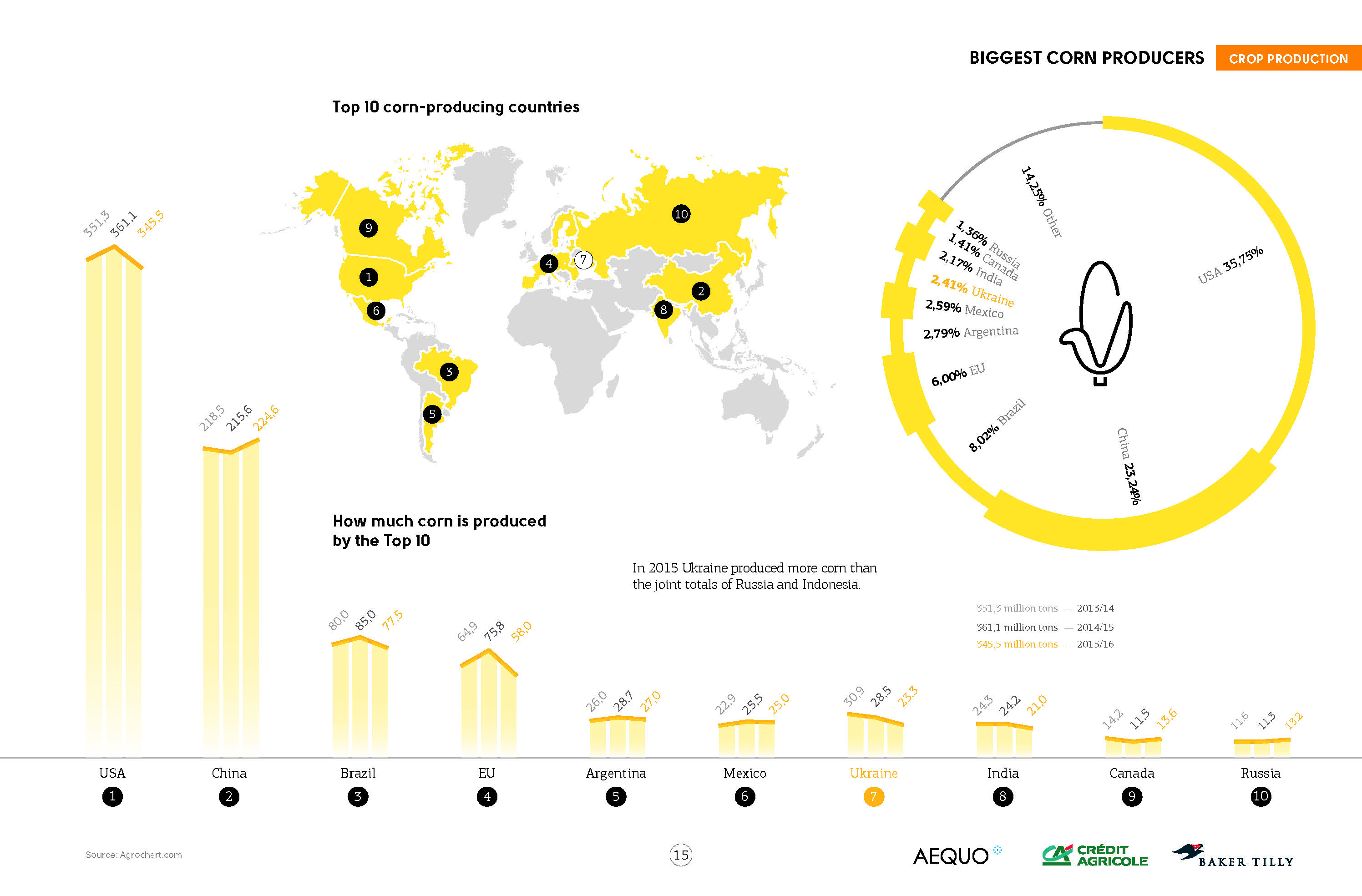Industry News
According to FAO and OECD forecasts, Ukraine will remain the top global grain supplier, but it will have to deal with infrastructure challenges and increase government support for farmers to keep its leading position.
Today, the key factor of agricultural market development is the increasing food consumption in developing countries.
So, according to FAO and OECD forecasts, the change in consumer preferences previously observed in developed countries will affect the rest of the world by 2021. In particular, the consumers will buy 0.4% less wheat, while the demand for rice, oil, meat and sugar will rise by up to 1%.
Prices of agricultural products are now closely related to energy markets.
So, for example, if global prices for oil fall by 25%, the prices for vegetable oils will decrease by 3%, wheat – by 4%, sugar – by 5%, oilseed meals – by 6%, ethanol – by 13%, fertilizers – by 14%.
This dependence is caused by the growing worldwide consumption of biofuels such as bioethanol and biodiesel, which are gradually replacing fossil fuels. The global production of cereals, vegetable oil and sugar cane for biofuel is expected to increase by 2%, 5%, and 10%, respectively. Consequently, the fraction of these crops produced for food will gradually decline.
Wheat and forage production in Ukraine will grow by 28% and 23%, respectively.
By 2021, OECD expects the global growth of wheat production at 11%, and forage production at 19%. Forage production will grow by about 20% faster, because of the greater consumption of meat in developing countries and the rising welfare of Asian nations.
Wheat importers will buy 65% more wheat from Ukraine…
The net annual export of wheat from Kazakhstan, Russia and Ukraine will exceed 50 million tons by 2021. These countries can also show the greatest increase in wheat exports.
The rapid growth of grain production in the Black Sea region and changes in export structure could shuffle the leaders in each of the product categories. In wheat exports, however, Ukraine is expected to keep its place in the global top 5, because of the stable demand.
…While forage crops production can increase by 40%
According to FAO forecasts, the US will remain the leading producer of forage crops, exporting over 60 million tons annually. Argentina will increase its exports by 51%, becoming the second-largest producer worldwide.
Ukraine will hold the third place, supplying about 17 million tons to foreign markets.
FAO and OECD forecasts for Ukrainian grain market look very promising. Though the accuracy of these forecasts will largely depend on government support for agribusiness.

